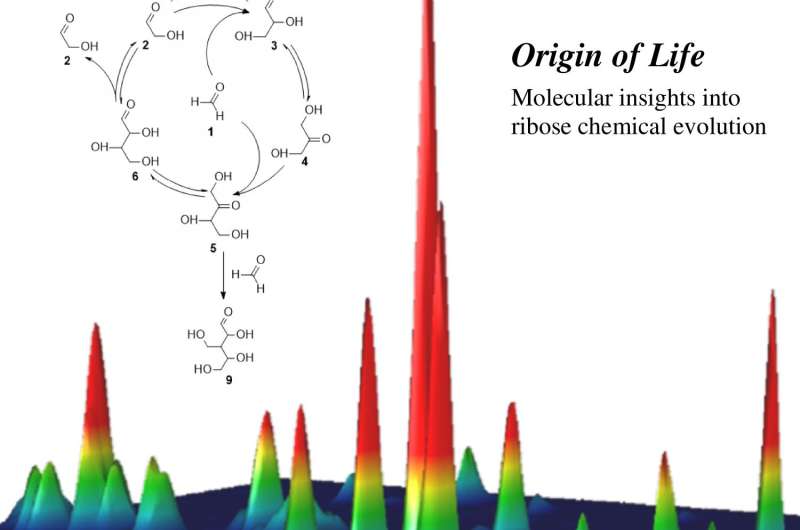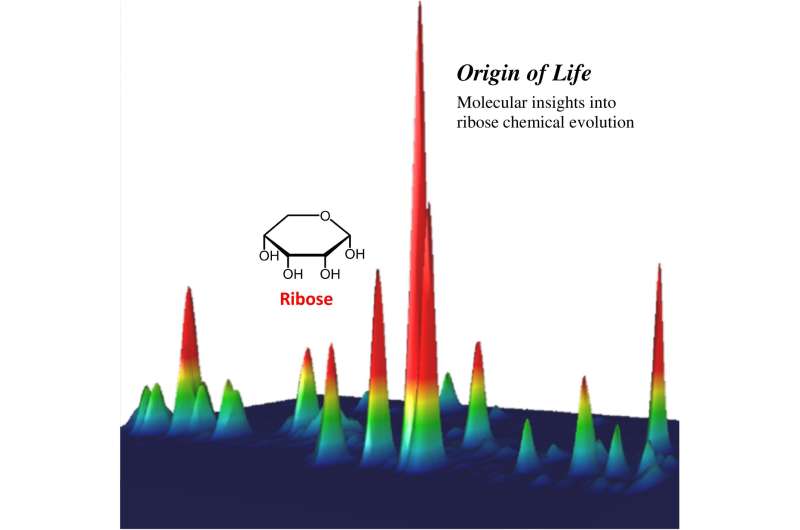Scientists say the 'R' in RNA may be abundant in space

New research suggests that the sugar ribose - the "R" in RNA - is probably found in comets and asteroids that zip through the solar system and may be more abundant throughout the universe than was previously thought.
The finding has implications not just for the study of the origins of life on Earth, but also for understanding how much life there might be beyond our planet.
Scientists already knew that several of the molecules necessary for life including amino acids, nucleobases and others can be made from the interaction of cometary ices and space radiation. But ribose, which makes up the backbone of the RNA molecule, had been elusive - until now.
The new work, published Thursday in Science, fills in another piece of the puzzle, said Andrew Mattioda, an astrochemist at NASA Ames Research Center, who was not involved with the study.
"If all these molecules that are necessary for life are everywhere out in space, the case gets a lot better that you'll find life outside of Earth," he said.
RNA, which stands for ribonucleic acid, is one of the three macromolecules that are necessary for all life on Earth - the other two are DNA and proteins.
Many scientists believe that RNA is a more ancient molecule than DNA and that before DNA came on the scene, an "RNA world" existed on Earth. However, ribose, a key component in RNA, only forms under specific conditions, and scientists say those conditions were not present on our planet before life evolved. So, where did the ribose in the first RNA strands come from?

To see if these molecules could have been delivered to Earth by asteroids and comets, a team of researchers re-created the conditions of the early solar system in a French lab to see whether ribose could easily be made in space.
They started with water, methanol and ammonia because these molecules were abundant in the protoplanetary disk that formed around the sun at the dawn of the solar system, and are also abundant in gas clouds throughout the universe. They were put in a vacuum and then cooled to a cryogenic temperature of 80 degrees kelvin (minus-328 degrees Fahrenheit).
The resulting ices were then heated to room temperature, which caused the volatile molecules to sublimate, leaving a thin film of material.
"The simulation is of cometary ices only, not cometary dust grains," said Uwe Meierhenrich, a chemist at the University of Nice Sophia Antipolis in France and one of the authors of the study.
The experiment took about six days to complete and yielded just 100 micrograms of the artificial cometary ice residue in the lab.
Artificial cometary ices have been created hundreds of times before in labs around the world, but until now researchers have not had the tools to detect sugars such as ribose in the samples.
Cornelia Meinert, also of the University of Nice Sophia Antipolis, explained that it's not just sugar and sugar-related molecules that are created in these experiments, but also amino acids, carboxylic acids and alcohols.
"We are confronted with a very complex sample containing a huge diversity of molecules," she said. "The identification of individual compounds is therefore very difficult."
Meinert said it wasn't until the group was able to use a new technique called multidimensional gas chromatography that they were able to detect ribose in these samples at all.
The researchers say that the ice samples they made in the lab could easily be made in other parts of the solar system.
"Our ice simulation is a very general process that can occur in molecular clouds as well as in protoplanetary disks," Meinert said. "It shows that the molecular building blocks of the potentially first genetic material are abundant in interstellar environments."
Scott Sandford, an astrochemist who has done similar work with cometary ices at NASA Ames Research Center, said adding sugars to the list of molecules that can be forged in space is an important step in understanding what building blocks of life may be available to foster life in other worlds.
"Insofar as these materials play a role in getting life started on planets, the odds are good that they'll be present to help," he said.
More information: "Ribose and related sugars from ultraviolet irradiation of interstellar ice analogs," Science, DOI: 10.1126/science.aad8137
Journal information: Science
©2016 Los Angeles Times
Distributed by Tribune Content Agency, LLC.





















